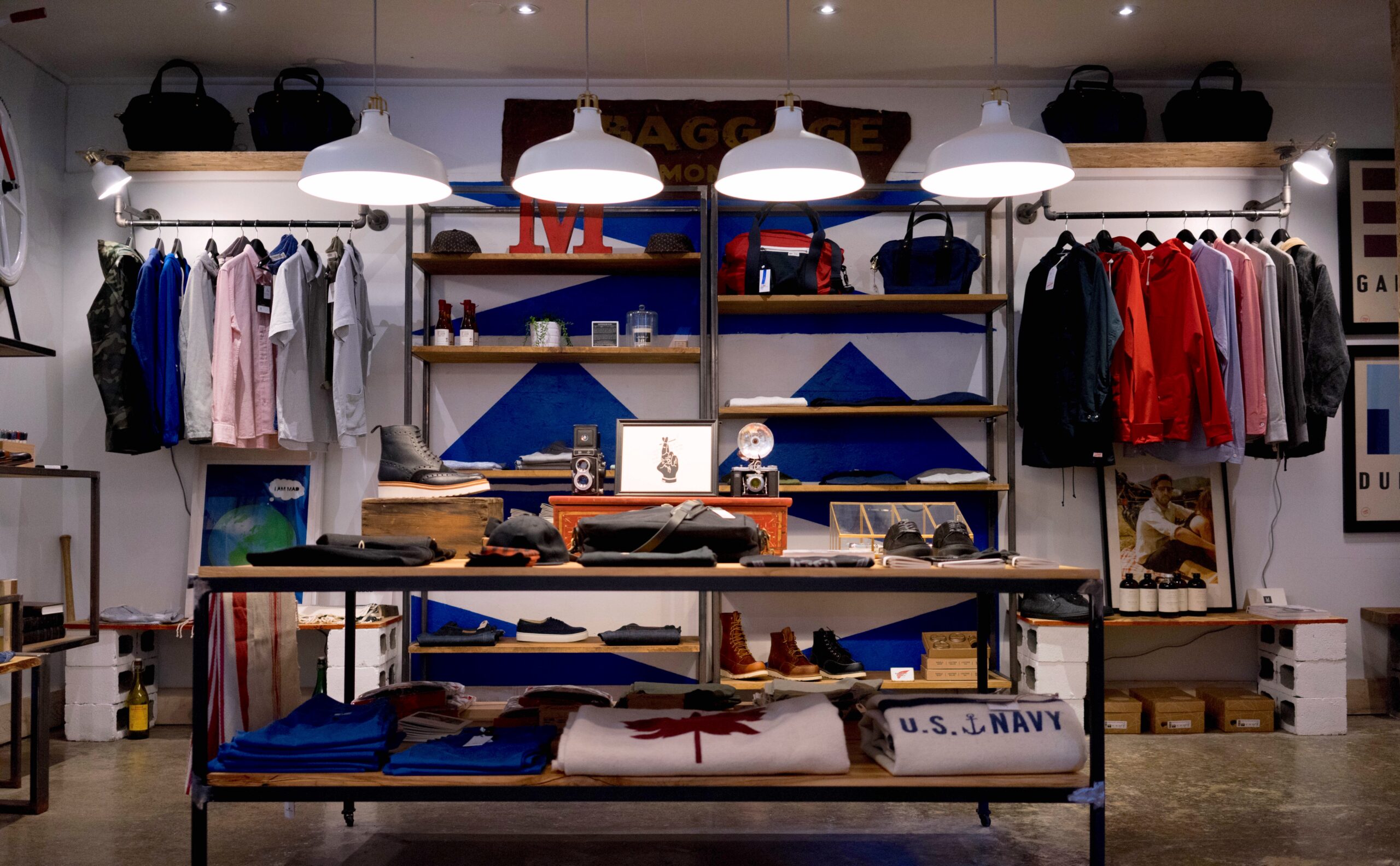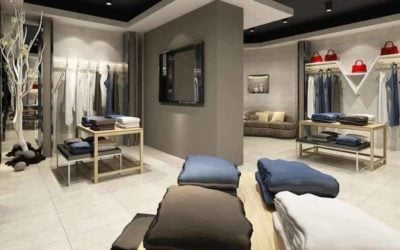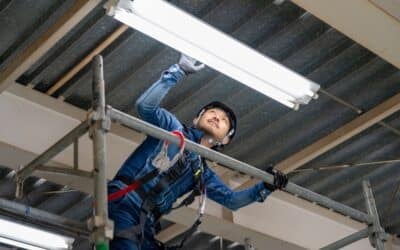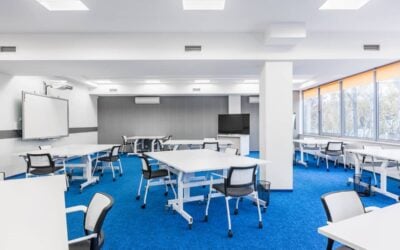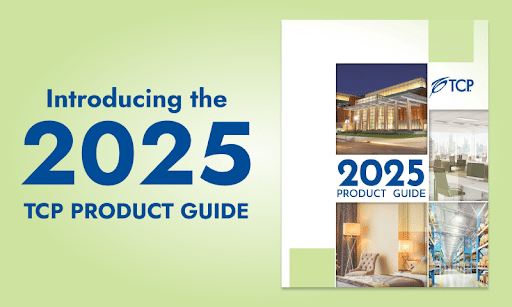How Light Impacts Psychology & Mood in Showrooms
Proper lighting is essential to today’s brick-and-mortar retailers, especially those that sell goods in showroom settings. Whether you’re selling appliances, electronics, or jewelry, retail lighting design serves a similar purpose in successful showrooms.
First, there’s the practical function of providing illumination for the space. Customers need to see the products being sold, and they also require a proper amount of light to navigate around the showroom floor.
Then there’s the less apparent, but equally important purpose of creating mood and atmosphere within the showroom. The right lighting can help build brand loyalty by establishing a positive emotional connection with your customers. If shoppers feel good when they’re in your showroom, they’re going to have a better experience.
And when lighting leads to a more desirable experience, customers will browse the space for a longer period of time. Happier customers are more likely to make a purchase, become loyal, repeat shoppers, and tell friends and family about the great experience they had in your establishment.
Considering the impact lighting can have on business, sales, and customer satisfaction in retail showrooms, it makes sense to take a strategic approach when designing a lighting plan for a showroom space.
Types of Lighting for Showrooms
Effective showroom lighting doesn’t come in a one-size-fits-all package. Instead, it is a strategic blend of color, contrast, control, and efficiency, which is often determined by the physical space and the types of products being sold in the showroom itself.
Retail display lighting, which includes showroom lighting, helps create personality while reinforcing brand and identity. A showroom that sells automobiles will most likely have a slightly different lighting plan than a showroom specializing in jewelry or luxury goods. No matter what’s being sold, there are a few basic factors to consider when starting to plan a new or upgraded LED showroom display.
In showroom environments, lighting not only sets the mood of the space, it also helps draw attention to highlighted merchandise. To properly achieve this, a showroom must use a combination of the four primary types of lighting – ambient, accent, task, and decorative lighting.
Ambient Lighting
This type of illumination, also known as general lighting, is the main source of light within a showroom space. Diffused ambient lighting makes customers feel more comfortable, and provides a better sense of well being. The right levels of ambient light should also contribute to customers shopping longer within a particular space.
To make your showroom feel more inviting, LED lights such as flat panels and commercial cans are ideal ambient light sources. These types of LED lights for showrooms are suitable for a wide range of spaces. This includes showrooms that sell cars, kitchen cabinets, high-end clothing and accessories, electronics, and more.
Accent Lighting
Accent lighting puts emphasis on particular products by using a focused source of light. It adds depth and contrast, while highlighting shape, texture, finish, and color of merchandise. This type of lighting directs customers toward products or displays, and is an essential part of the decision-making process that leads to a purchase.
The key to effective accent lighting is to make it brighter and more precise than the surrounding ambient light. Track fixtures with directional capabilities are very effective sources of accent light. They are easy to adjust, which allows you to precisely aim the proper amount of light wherever it’s needed most.
Task Lighting
Task lighting illuminates an area designed for a specific function. It provides a focused source of bright, crisp light. Customer service counters, consultation areas, individual work spaces, and point-of-sale checkout areas are typical sections within a showroom that benefit from task lighting.
In showrooms specializing in high-end apparel, dressing rooms need appropriate task lighting so customers can accurately assess the fit and look of the items being tried on. Effective task lighting, no matter where it’s being used, should eliminate shadows, prevent glare, and showcase colors accurately. Hanging pendant fixtures, or individual task lamps are both considered useful sources of this type of illumination.
Decorative Lighting
This particular type of lighting is all about aesthetics and visual appeal. The decorative fixture designs you choose help convey your brand’s identity, and generate an emotional response from clients and customers in your showroom.
Decorative lighting includes sconces, chandeliers, pendants, table and floor lamps, and cylinders. When used effectively, decorative lighting in a showroom should complement the space’s interior, while contributing to the overall lighting plan. It reflects brand image, and reinforces the theme and style of the space to shoppers.
Depending on the merchandise being sold in your showroom, effective decorative lighting can range from sleek, minimalist and modern, to ornate, opulent, and nostalgic.
Impact of Lighting in Showrooms
The selection of goods sold in a showroom is often more specialized than the wide range of merchandise found in a typical retail store. Showrooms generally sell higher-ticket items, too, including cars, jewelry, personal electronics, and furniture. Because of the profit potential at stake in this type of sales environment, showrooms can benefit significantly from the best LED retail lighting displays.
When you choose LED lights for your showroom, it’s an investment that will eventually pay itself off. LEDs use less energy than fluorescent, halogen, and other traditional light sources, so energy bills will be much lower. LEDs also produce light that’s known to be crisp, clear, and optimally bright, which is ideal for most showroom settings.
Plus, LED lighting comes in a range of color temperatures, from cool to warm, and has the ability to accurately show product colors that are true-to-life. Color accuracy is especially important for customer satisfaction and your showroom’s overall credibility.
To create an effective LED showroom display that keeps customers comfortable and attentive, this requires a well-balanced mix of impactful lighting that’s just the right temperature and renders the right colors.
Correlated Color Temperature
Correlated color temperature, or CCT, falls into three general categories, all measured in Kelvin (K) – warm, neutral, and cool. Warm light with a faint yellow glow is called warm white. It ranges 3000K or below, and enhances reds and oranges, dulls blue tones, and adds a yellow tint to whites and greens. Ambient light in showrooms selling furniture, luxury clothing, and other “soft” textile-based goods can benefit from warm-ranging temperatures.
Neutral white light ranges from 3000K – 3500K. It enhances most colors equally, and doesn’t overemphasize yellow or blue tones. Neutral light enhances feelings of well-being, and may extend the amount of time customers spend within a space, potentially leading to a purchase.
Cool white light, typically ranging above 3500K or 4000K, has a bluish tint. It enhances blue tones, dulls reds, and gives a bluish tint to whites and greens. This temperature of light works best in showrooms featuring electronics and home appliances, but if it ranges too blue, there’s a risk of the space appearing too cold or sterile to customers.
Color Rendering Index
If something appears to be the wrong color, this could drastically impact sales. This is especially true if your showroom sells jewelry, clothing, furniture, tile, and other goods where color is considered a critical factor.
Because it’s important to show products in their truest colors, it is essential to choose lights that do not distort colors. Lights with a high Color Rendering Index, or CRI, are vital for this. CRI indicates how closely a light source reveals true colors of an object, compared to natural daylight.
The closer a light source’s CRI is to 100, which is the CRI of daylight, the better it will be at accurately showing true-to-life colors.
TCP Showroom Lighting
Retail display lighting has a lot to accomplish in a showroom. It has to attract customers and make them comfortable in your space. It must reinforce your brand, highlight merchandise, and enhance colors. Lastly, it should give an impression about image and price range, while reducing your overall energy costs.
LED showroom display lighting can easily do all this. The lighting experts at TCP can help you reconfigure your showroom’s current lighting to make it more effective and efficient.
Are you interested in learning more about LED showroom lights? See what TCP has to offer!

